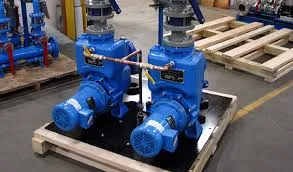English
- Afrikaans
- Albanian
- Amharic
- Arabic
- Armenian
- Azerbaijani
- Basque
- Belarusian
- Bengali
- Bosnian
- Bulgarian
- Catalan
- Cebuano
- Corsican
- Croatian
- Czech
- Danish
- Dutch
- English
- Esperanto
- Estonian
- Finnish
- French
- Frisian
- Galician
- Georgian
- German
- Greek
- Gujarati
- Haitian Creole
- hausa
- hawaiian
- Hebrew
- Hindi
- Miao
- Hungarian
- Icelandic
- igbo
- Indonesian
- irish
- Italian
- Japanese
- Javanese
- Kannada
- kazakh
- Khmer
- Rwandese
- Korean
- Kurdish
- Kyrgyz
- Lao
- Latin
- Latvian
- Lithuanian
- Luxembourgish
- Macedonian
- Malgashi
- Malay
- Malayalam
- Maltese
- Maori
- Marathi
- Mongolian
- Myanmar
- Nepali
- Norwegian
- Norwegian
- Occitan
- Pashto
- Persian
- Polish
- Portuguese
- Punjabi
- Romanian
- Russian
- Samoan
- Scottish Gaelic
- Serbian
- Sesotho
- Shona
- Sindhi
- Sinhala
- Slovak
- Slovenian
- Somali
- Spanish
- Sundanese
- Swahili
- Swedish
- Tagalog
- Tajik
- Tamil
- Tatar
- Telugu
- Thai
- Turkish
- Turkmen
- Ukrainian
- Urdu
- Uighur
- Uzbek
- Vietnamese
- Welsh
- Bantu
- Yiddish
- Yoruba
- Zulu
Telephone: +86 13120555503
Email: frank@cypump.com
Aug . 01, 2024 06:52 Back to list
Detailed Overview of Slurry Pump Specifications for Optimal Performance and Application Insights
Understanding Slurry Pump Specifications A Comprehensive Guide
Slurry pumps are essential in various industrial applications, particularly in mining, construction, and wastewater management. These specialized pumps handle abrasive and viscous materials, ensuring efficient transport of slurries — mixtures of solids and liquids. When selecting a slurry pump, understanding its specifications is crucial for optimal performance and durability. This article explores the key specifications that define slurry pumps, helping users make informed decisions.
1. Flow Rate
One of the most critical specifications of a slurry pump is its flow rate, typically measured in cubic meters per hour (m³/h) or gallons per minute (GPM). The flow rate indicates how much slurry the pump can handle over a set period. It’s essential to match the pump's flow rate with the system requirements to ensure efficient operation. A pump that delivers too much or too little flow can lead to operational inefficiencies and increased wear on pump components.
2. Head Pressure
Head pressure, or total dynamic head (TDH), reflects the height to which the pump can raise the slurry. It is measured in meters or feet and factors in both the vertical lift and the friction losses in the piping system. Understanding the head pressure is vital for selecting a slurry pump suitable for the specific application, as it determines the pump's ability to move slurry through various elevations and distances.
3. Pump Material
Since slurry pumps deal with abrasive materials, the construction material of the pump is paramount. Common materials include high-chrome alloy, rubber-lined, and stainless steel. High-chrome alloys offer excellent wear resistance, while rubber-lined pumps provide resilience against corrosion and abrasion. The choice of material affects the pump's longevity and maintenance requirements, so selecting the right material based on the type of slurry being handled is crucial.
slurry pump specifications

The impeller of a slurry pump plays a significant role in its performance. Slurry pump impellers come in various designs, such as open, semi-open, and closed configurations. Each design influences the pump's efficiency and the size of solids it can handle. Open impellers are typically used for slurries with larger particles, while closed impellers are better suited for finer slurries, providing higher efficiency and better hydraulic performance.
5. Pump Size and Weight
Pump size and weight are vital considerations for installation and operational efficiency. Larger pumps can handle greater capacities but often require more space and robust support structures. Conversely, smaller pumps are easier to install but may not meet the capacity requirements of more extensive pumping systems. The weight of the pump can also affect installation logistics and overall system design.
6. Suction and Discharge Specifications
The suction and discharge diameter of the pump must align with the piping system to minimize turbulence and maintain efficient flow. Improperly sized suction and discharge lines can lead to issues like cavitation, which can severely damage the pump.
7. Power Requirements
Understanding the power requirements is essential for ensuring the pump operates effectively. The motor power, typically measured in kilowatts (kW) or horsepower (HP), should match the pump’s specifications and be capable of handling the load during operation. Additionally, it’s essential to consider the electrical supply and its compatibility with the pump's power needs.
Conclusion
Selecting the right slurry pump involves a comprehensive understanding of its specifications. Key factors include flow rate, head pressure, pump material, impeller design, size and weight, suction and discharge specifications, and power requirements. By considering these elements, industries can ensure they choose the most suitable slurry pump for their specific applications, optimizing efficiency and minimizing wear and maintenance costs. Whether in mining, wastewater treatment, or construction, a well-chosen slurry pump is instrumental in achieving operational success.
-
Horizontal Split Case Pump with GPT-4 Turbo | High Efficiency
NewsAug.01,2025
-
ISG Series Pipeline Pump - Chi Yuan Pumps | High Efficiency, Durable Design
NewsAug.01,2025
-
Advanced Flue Gas Desulfurization Pump with GPT-4 Turbo | Durable & Efficient
NewsJul.31,2025
-
ISG Series Vertical Pipeline Pump - Chi Yuan Pumps | Advanced Hydraulic Design&Durable Construction
NewsJul.31,2025
-
ISG Series Vertical Pipeline Pump - Chi Yuan Pumps | Energy Efficient & Low Noise
NewsJul.31,2025
-
pipeline pump - Chi Yuan Pumps Co., LTD.|High Efficiency&Low Noise
NewsJul.31,2025










